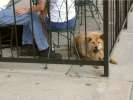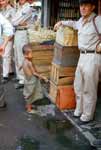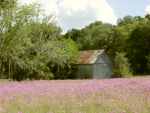Kinds of Photography

What kind of camera you use should be determined by the kind of photography you plan to do. You can do street photography with a box camera, and in fact, in the early part of the twentieth century some of the greatest street photographs in the history of photography were made with equipment a lot less sophisticated than the modern equivalent of a box camera. But it's much easier to do that kind of work with a camera built for the job. I'm sure some of the greatest pictures of all time were missed back then because the equipment was so balky and complicated.
(Click on the thumbnail pictures below to see larger versions, then use your browser's back arrow to return to the text)
Family photography
We all do family photography and if it's done properly – meaning well shot, well organized, and well documented – the results can be treasures for many generations. I have some wonderful pictures of my grandparents and one or two of a great grandmother, but I'd really love to have pictures of all my ancestors going back at least to the beginning of the nineteenth century. Every once in a while a grandchild or great-grand pops up, the origin of whose phenotype is mysterious. Those pictures probably could clear up the mystery. This picture made in 1914 includes all four of my grandparents, my mother and dad (both 14), three aunts and one uncle.
Even if you don't have a digital camera at the moment, you can make digital copies of your photographs by scanning them. If you have priceless family historical photographs I urge you to scan them and put them on CDs or DVDs. If you have the negatives, scan those. The quality will be better. If not, scan the prints. The photographs will deteriorate over time but the digital copies won't – at least not in the immediate future. A good CD or DVD should last for at least 70 years and before those 70 years are up the onward rush of computer science is going to bring us storage media that will last for 700 or 7,000 years. If you save the stuff now your descendents may bless you. (Then, again, who knows?)
If you do family photography you'll probably want to make prints. Since you can print directly onto 8 ½ by 11 sheets with an inkjet printer it's pretty easy to make compact, comb-bound books that hold up much better under handling than photo albums with paste-in corners that fall out along with the pictures as soon as a grandkid starts flipping through the book.
The other thing you can do with digital family photographs is make reduced size, reduced resolution digital copies and e-mail them to other family members.
You can do good family photography with just about any modern camera. They all have more than the minimum requirements you need to do the job.
Street Photography
Street photography is my favorite kind of photography. The world is full of interesting people doing interesting things – interacting with each other and with their surroundings. To me, and I'm sure Eugene Atget and Walker Evans would agree, street photography also can include surreal relationships between people and structures.
To do street photography properly you take a small camera out into the madding crowd and LOOK! You need to be very familiar with your equipment because you usually have only a second or so to line up your shot and shoot.
To see what street photography is all about read Bystander, A History of Street Photography by Colin Westerbrook and Joel Meyerowitz, 1994, Bullfinch. Of all the books in my collection of photo books listed in the bibliography at the end of this series it's my favorite.
Photojournalism
Photojournalism is documentary photography that tells a story, usually in a series of pictures but sometimes in a single picture. There are a bunch of people in Iraq and Afghanistan doing photojournalism as I write this. Here's a shot I made in Taegu, Korea in 1953. It's one of those single pictures that tells a story.
Wildlife
Unless you live in the heart of a city there's always wildlife outside your door. To do the best kind of wildlife photography you take a camera – a single lens reflex (SLR) is a good choice – and go out in the morning before your community is stirring. If you're going to shoot an anhinga drying his wings you need to become friendly with him so he won't fly away before you can get your shot. If you're going to shoot him on the wing, run the zoom lens out to its full extension and walk toward him softly. Figure out which direction the bird is likely to fly (usually into the wind) and be ready to shoot as he goes by. With birds you need the same kind of familiarity with your equipment you need for street photography.
Scenery
Unless you decide you want to give Ansel Adams a run for his money, you can do good scenery work with any mid-range camera, but not with a bottom-of-the-line digital camera. In most cases, but not always, detail is important in scenery shots. Some of the most famous photographers at the turn of the twentieth century would have argued with that statement. They tried to subdue detail and make their photographs look like Impressionist paintings. But that misconception passed away when, in the twenties and thirties, Edward Weston demonstrated how beautiful straight photography could be. A digital camera with less than about twelve megapixels (twelve million pixels) just doesn't have the resolution to do the job.
If you do decide to give Ansel Adams a run for his money, look around for an 11 by 14 inch view camera, a big, sturdy tripod, a bunch of 11 by 14 inch film holders, a bunch of slow, fine-grain sheet film, and a full, temperature-controlled darkroom. There's no small camera, film or digital, that can produce the kind of stunning detail Ansel was able to get with his very large, very cumbersome equipment.
Commercial photography
If you're a commercial photographer or you're about to become one you don't need any advice from me. You'll have decided what kind of commercial work you want to do and you'll have a good idea of what equipment you need to do it. Commercial work can range all the way from portraiture to photographs of industrial processes. Some of it is very specialized.





